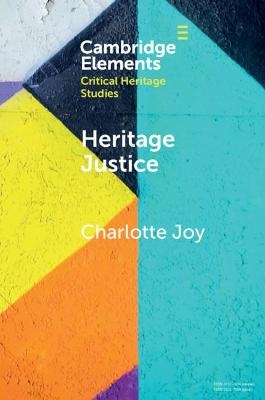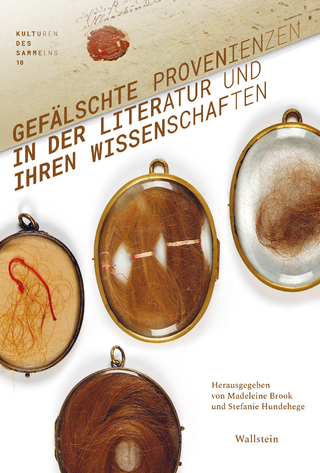
Heritage Justice
Seiten
2020
Cambridge University Press (Verlag)
978-1-108-82052-3 (ISBN)
Cambridge University Press (Verlag)
978-1-108-82052-3 (ISBN)
This Element explores how far past wrongs can be remedied through compensatory mechanisms involving material culture. It goes beyond a critique of global heritage brokers such as UNESCO, the ICC and museums as redundant, Eurocentric and elitist to explore why these institutions have become the focus for debates about global heritage justice.
Heritage Justice explores how far past wrongs can be remedied through compensatory mechanisms involving material culture. The Element goes beyond a critique of global heritage brokers such as UNESCO, the ICC and museums as redundant, Eurocentric and elitist to explore why these institutions have become the focus for debates about global heritage justice. Three broad modes of compensatory mechanisms are identified: recognition, economic reparation and return. Arguing against Jenkins (2016) that museums should not be the site for difficult conversations about the past, Heritage Justice proposes that it is exactly the space around objects and sites created by museums and global institutions that allows for conversations about future dignity. The challenge for cultural practitioners is to broaden out ideas of material identity beyond source communities, private property and economic value to encompass dynamic global shifts in mobility and connectivity.
Heritage Justice explores how far past wrongs can be remedied through compensatory mechanisms involving material culture. The Element goes beyond a critique of global heritage brokers such as UNESCO, the ICC and museums as redundant, Eurocentric and elitist to explore why these institutions have become the focus for debates about global heritage justice. Three broad modes of compensatory mechanisms are identified: recognition, economic reparation and return. Arguing against Jenkins (2016) that museums should not be the site for difficult conversations about the past, Heritage Justice proposes that it is exactly the space around objects and sites created by museums and global institutions that allows for conversations about future dignity. The challenge for cultural practitioners is to broaden out ideas of material identity beyond source communities, private property and economic value to encompass dynamic global shifts in mobility and connectivity.
Introduction; 1. Justice as Return; 2. Justice as International Law; Conclusion
| Erscheinungsdatum | 13.11.2020 |
|---|---|
| Reihe/Serie | Elements in Critical Heritage Studies |
| Zusatzinfo | Worked examples or Exercises |
| Verlagsort | Cambridge |
| Sprache | englisch |
| Maße | 230 x 150 mm |
| Gewicht | 120 g |
| Themenwelt | Kunst / Musik / Theater |
| Geisteswissenschaften ► Archäologie | |
| Geisteswissenschaften ► Geschichte ► Hilfswissenschaften | |
| ISBN-10 | 1-108-82052-2 / 1108820522 |
| ISBN-13 | 978-1-108-82052-3 / 9781108820523 |
| Zustand | Neuware |
| Informationen gemäß Produktsicherheitsverordnung (GPSR) | |
| Haben Sie eine Frage zum Produkt? |
Mehr entdecken
aus dem Bereich
aus dem Bereich
Anforderungen an das digitalisierte Kulturerbe
Buch | Softcover (2023)
transcript (Verlag)
CHF 42,90
Buch | Hardcover (2024)
Wallstein Verlag
CHF 53,20


